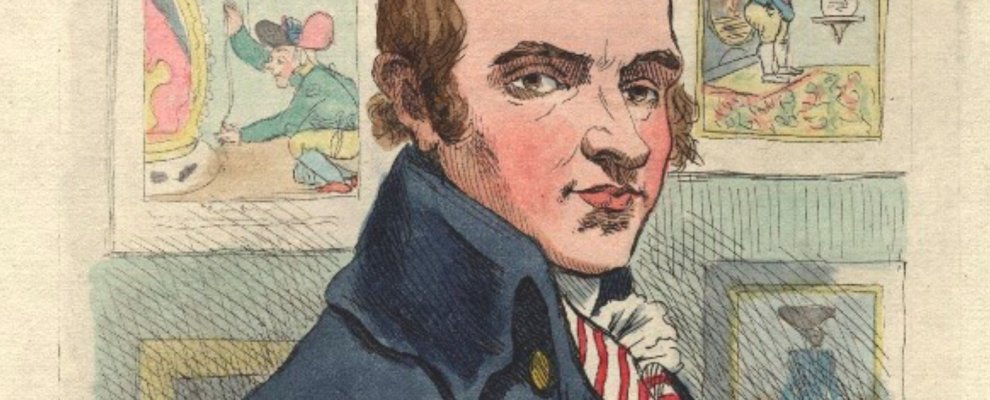James Gillray (1756-1815) is heralded as one of the founding fathers of British satire. Depicting political events and society figures with a penetrating gaze, he was equally feared and revered. The themes he draws upon in his masterful prints remain vitally relevant to modern audiences, just as his work continues to influence and inspire today’s most notable cartoonists.
Early Life
Born in Chelsea, Gillray’s father was an officer in the Moravian Brotherhood, a strict Protestant sect emphasizing the essential depravity of man. From five to eight Gillray was sent to a Moravian boarding school known for its harsh and otherworldly focus. His bleak childhood, which included the death of his eight year old brother, may help to explain his cynical world view. Showing an early aptitude for drawing and painting, at fourteen Gillray was apprenticed to an engraver in Cumbria where it is supposed he worked on trade cards and buttons.
Starting Out
By 1775, aged nineteen, Gillray was in London and associated with the Humphrey family who worked in printing and publishing. His first efforts at satire were mainly social rather than political in nature, as being the son of a former soldier, he had no natural access to the corridors of power. Gillray found his way slowly, exploring and improving his skills as an artist and printmaker and ultimately discovering his own style.
An Aspiring Portraitist
In reaction to the then low reputation of satirical prints within the art world, in the spring of 1778 twenty one year old Gillray enrolled in the recently founded Royal Academy schools. He aimed to become a “legitimate” artist, and in particular, a portrait painter. Thankfully for eighteenth century caricature, however, Gillray’s repeated efforts to establish himself as a “serious” artist and engraver never really took hold. After 1785, with a few exceptions, Gillray pursued an unflagging commitment to graphic satire.
Mastering the Art of Satire
With Gillray’s return to the ranks of professional graphic satirists in 1786, we begin to see the succession of brilliant works that prompted Sir David Low to call him “the father of the political cartoon.” By 1786, Gillray had worked for as many as 20 different print sellers, using a variety of perspectives and techniques, and exploring a wide range of subject matter. Gillray’s prints in the 1780s and beyond are notable for their frequent inclusion of background signs, pictures, and enriching details that amplify and present ironic perspectives on the central action.
Final Years
Gillray’s health began to worsen in around 1807, and it was after this time that he started producing prints at a slower rate and would often miss deadlines. According to his contemporaries he oscillated between a sullen and frenetic disposition, which we can now infer were symptoms of bipolar disorder. Between 1811 until his death in 1815, Gillray’s mental health drastically deteriorated and he managed to produce only two prints. In the May of 1815, aged fifty eight, he made the last of three attempts to end his life by throwing himself out of an upstairs window, dying on 1st June from the injuries he sustained.
Archives
- December 2024
- October 2021
- August 2021
- July 2021
- June 2021
- May 2020
- April 2020
- March 2020
- February 2020
- January 2020
- November 2019
- October 2019
- July 2019
- February 2019
- January 2019
- December 2018
- November 2018
- November 2017
- August 2017
- May 2017
- December 2016
- August 2016
- June 2016
- April 2016
- March 2016
- February 2016
- January 2016
- December 2015
- November 2015
- August 2015
- June 2015

